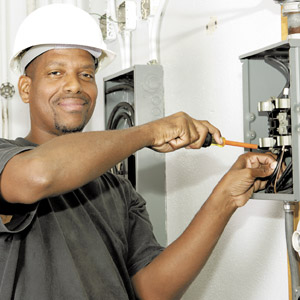Porky's Hole Thoughts: Water Well Problems Not Always Driller's Fault
I was contracted to fly to California as an expert witness for an attorney who was suing a well contractor because the well casing had been damaged due to an attempt to drive a dropped pump in the well.
Before my travel, the attorney mailed me three videos of the dropped pump then called me to describe on the telephone what I saw. In the first video, I saw the dropped pump and wire in the well. In the second video, I could see the damaged PVC well casing. The third video had nothing to do with the specific well in question. With that telephone interview, they had me fly to Oakland, Calif., to view the site and meet with everyone involved.
Upon arrival, the plaintiff’s attorney took me to the jobsite to view the well. Of course, most wells look similar at the top. However, viewing the 1-inch PVC drop pipe lying on the ground, I could see that the PVC threads were broken off at the top joint. The pump was installed through a well seal and I could see a 1-inch galvanized Tee on the top with a 1-inch pipe plug still in the vertical part of the Tee and the broken 1-inch PVC pipe (Dutchman) in the lower part. There was a galvanized nipple and half of a union on the end of the nipple. It was obvious the pump repairman (an electrical contractor) had loosened the union and tied a sling around the nipple and attempted to lift the drop pipe, wire and pump, and that’s what broke the PVC thread and dropped everything in the well.

|
|
Electrical, plumbing and HVAC contractors do their professional parts, columnist Porky Cutter says, but have no business servicing “in the ground” submersible pumps unless specifically trained to do so. Source: iStock |
A qualified pump installer would have known that you remove the 1-inch pipe plug and install a hoisting plug and lift from the center of the pipe.
When they were unable to retrieve the in-well assembly, they attempted to drive the assembly deeper in the well so that they could install another pump on top of the existing one. However, in doing so they damaged and destroyed the well casing and the well.
The following day we met in the conference room of the attorneys for the plaintiffs—the property owners, with the driller and attorneys for the driller. All asked questions about what I had determined from the videos and the on-site visit.
I advised them that when the unqualified electrical contractor lifted the drop pipe by the side of the Tee instead of the top they broke the threads on the PVC pipe, dropping the pump, drop pipe, wire and safety rope in the well. Then, not being experienced in recovery, they attempted to drive the pump farther into the well, damaging the well casing and destroying the well.
Then, they asked me if there was a legitimate case here. My response: Yes, you have a good case, but you’re suing the wrong person. The well contractor wasn’t involved in dropping the pump or destroying the well. The electrical contractor was at fault. Everyone thanked me and I flew home never to hear from them again!
I see this happen so many times in too many states, when an electrical, plumbing or HVAC contractor has attempted to remove a pump and ends up damaging or destroying the well. Then they want to blame the drilling contractor!
Unless a contractor has taken a Water Well/Pump (WWP) vocational course, they should stay away from “in the ground” submersible pumps.
Many states recognize licensed plumbers, electricians and HVAC contractors as being qualified to service pumps. That’s just wrong … but that’s another article for another time!
Looking for a reprint of this article?
From high-res PDFs to custom plaques, order your copy today!


